#accesscontrols
Explore tagged Tumblr posts
Text
Data Security And Privacy Considerations In Email Reminder Systems
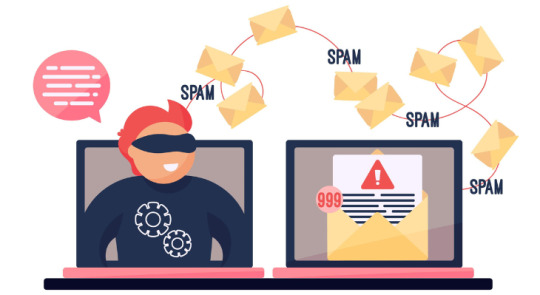
Data security and privacy are paramount in today’s digital landscape, where information is increasingly stored and transmitted electronically. As businesses and individuals rely on email reminder systems to streamline task management and improve productivity, it becomes crucial to address the potential risks and vulnerabilities associated with data security and privacy. In this blog, we will explore the importance of data security and privacy in email reminder systems, discuss common considerations, and provide actionable tips to enhance the protection of sensitive information.
The Significance of Data Security and Privacy
Data security and privacy are vital for maintaining trust and safeguarding sensitive information. In the context of email reminder systems, ensuring data security and privacy is of utmost importance to protect the confidentiality, integrity, and availability of data. Breaches can lead to severe consequences, including financial loss, reputational damage, and legal ramifications. By prioritizing data security and privacy, organizations and individuals can mitigate risks and build a solid foundation for maintaining trust with their users and clients.
Encryption and Secure Transmission
Encryption plays a crucial role in securing data transmitted through email reminder systems. Implementing strong encryption protocols ensures that the information remains confidential during transit, making it significantly harder for unauthorized parties to intercept or access the data. End-to-end encryption provides an extra layer of protection, ensuring that only the intended recipient can decrypt and access the data.
Access Controls and Authentication
Implementing robust access controls and authentication mechanisms is essential to prevent unauthorized access to email reminder systems. By enforcing strong password policies, multi-factor authentication, and user access controls, organizations can ensure that only authorized individuals can access and manage sensitive data. Regularly reviewing and updating access privileges based on user roles and responsibilities further enhances security.
Compliance with Data Protection Regulations
Adhering to relevant data protection regulations, such as the General Data Protection Regulation (GDPR) or the California Consumer Privacy Act (CCPA), is crucial for organizations handling personal and sensitive data. Compliance involves obtaining proper consent, providing transparent information about data usage, implementing privacy policies, and offering data subject rights to individuals. Organizations should familiarize themselves with applicable regulations and implement necessary measures to meet compliance requirements.
Data Retention and Disposal Policies
Establishing clear data retention and disposal policies is essential to minimize data exposure and potential risks. Retaining data for longer than necessary increases the chances of unauthorized access or accidental disclosures. Organizations should define retention periods based on legal requirements and business needs, and regularly dispose of data using secure methods to ensure complete erasure.
Regular Security Audits and Training
Conducting regular security audits helps identify vulnerabilities and weaknesses in email reminder systems. Penetration testing, vulnerability assessments, and code reviews can uncover potential risks and allow organizations to address them promptly. Additionally, providing comprehensive security training to employees ensures that they are aware of data protection practices, phishing attempts, and social engineering techniques, reducing the likelihood of human error leading to security breaches.
Data security and privacy considerations are critical in email reminder systems to protect sensitive information and maintain trust with users and clients. By implementing robust security measures, including encryption, access controls, compliance with data protection regulations, and regular security audits, organizations can strengthen their email reminder systems’ resilience against potential threats. Prioritizing data security and privacy not only safeguards confidential information but also enhances the overall reputation and credibility of businesses and individuals using these systems. By staying vigilant and proactive, we can create a secure digital environment that enables efficient task management while protecting our most valuable asset—data.
0 notes
Text

Ensure only authorized access to your business operations with TopProz's advanced Access Control feature. Protect sensitive information, manage user permissions, and maintain security across all platforms for seamless workflow management.
#AccessControl#BusinessSecurity#ServiceManagement#UserPermissions#TopProz#DataProtection#WorkflowManagement
6 notes
·
View notes
Text
How Biometric Devices Improve Employee Time Tracking
In an era where organizations strive for efficiency, accuracy, and security, managing employee attendance has evolved from traditional punch cards and manual logbooks to high-tech solutions. Among the most transformative innovations is the biometric device, a software that has revolutionized how companies track and manage employee time.
Whether you're a small business or a large enterprise, ensuring accurate time tracking is essential for payroll, productivity, and workforce management. Biometric devices offer a modern solution by linking attendance to unique human characteristics such as fingerprints, facial recognition, or iris scans - making time fraud and buddy punching things of the past.
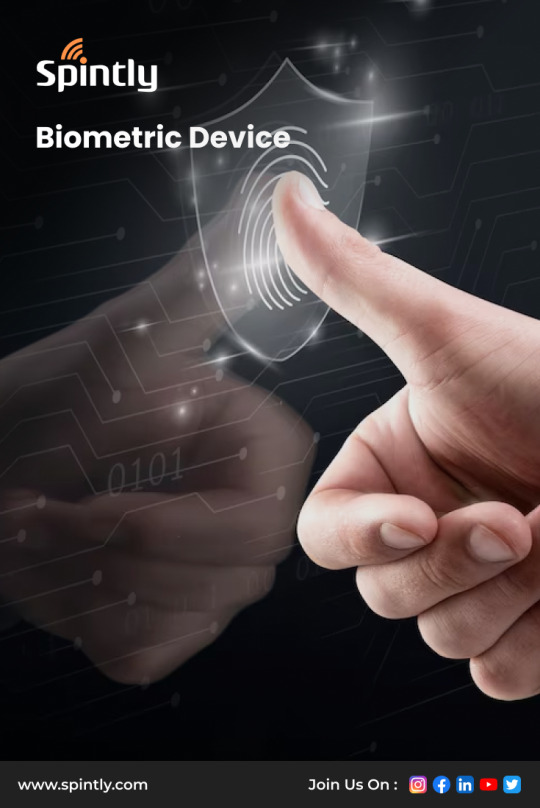
What Is a Biometric Device?
A biometric device is a piece of hardware used to identify individuals based on unique biological traits. In the context of workplace management, these devices are typically deployed for access control and attendance tracking. Unlike traditional systems that require ID cards or PINs, biometric systems ensure that only the actual individual can clock in or access a restricted area.
Biometric devices can come in various forms:
Fingerprint scanners
Facial recognition systems
Iris recognition devices
Voice recognition tools
The growing popularity of biometric technology is due to its speed, accuracy, and ease of integration with other HR and payroll systems.
Common Problems with Traditional Time Tracking Methods
Before diving into how biometric devices improve employee time tracking, it’s worth understanding the limitations of traditional systems:
Buddy punching: Employees clock in or out for each other, leading to time theft.
Manual errors: Human oversight when entering or correcting data can lead to payroll discrepancies.
Lost or stolen access cards: These can pose both a security and operational risk.
Lack of real-time data: Delayed updates make it difficult to monitor workforce performance.
These challenges not only impact payroll accuracy but also affect overall productivity and morale.
How Biometric Devices Transform Time Tracking
1. Accuracy and Reliability
Biometric devices are incredibly accurate. Because they rely on individual traits that cannot be duplicated or shared, they offer reliable verification each time an employee clocks in or out. This eliminates common issues like buddy punching or fraudulent time logging.
For instance, a facial recognition-based biometric device ensures that only the authorized individual can record attendance. This means more accurate payroll processing and fewer disputes between HR and employees.
2. Real-Time Attendance Monitoring
Biometric systems provide real-time data on employee attendance. This allows HR departments and team managers to monitor punctuality, break times, and absenteeism more effectively. Cloud-based biometric devices like those offered by Spintly offer real-time syncing across multiple locations, perfect for businesses with distributed teams or multiple branches.
This live data can be accessed through dashboards and reports, offering actionable insights that go beyond mere attendance tracking.
3. Integration with Payroll and HRMS
A modern biometric device does more than log time. Many advanced systems integrate seamlessly with Human Resource Management Systems (HRMS) and payroll software. This eliminates the need for manual data entry, ensuring timely and accurate salary processing, tax compliance, and leave management.
Solutions like Spintly’s biometric access control and attendance management platforms are built with open APIs, making it easy to integrate with third-party software - resulting in a streamlined workflow and reduced administrative burden.
4. Improved Compliance and Audit Trail
Maintaining proper records of working hours is essential to comply with labor laws and industry standards. Biometric devices automatically log every time an employee enters or exits the workplace, providing a secure and tamper-proof audit trail.
This data becomes especially useful during labor audits or legal disputes, ensuring organizations remain compliant without having to dig through manual records.
5. Contactless and Hygienic Options
In the post-pandemic world, hygiene has become a critical consideration in workplace technology. Modern biometric devices now offer touchless options, such as facial recognition and mobile-based check-ins, which minimize physical contact.
Cloud-enabled platforms like Spintly even offer mobile-based biometric attendance solutions, where employees can check in via their smartphones - reducing shared touchpoints while maintaining strict security protocols.
Industry Use Cases
1. Corporate Offices
Biometric time tracking helps monitor in-office attendance while integrating with access control systems to manage entry permissions.
2. Manufacturing & Industrial Units
These devices ensure workers clock in accurately despite working in high-volume shifts, often across different parts of the plant.
3. Healthcare Institutions
Hospitals benefit from biometric tracking to maintain 24/7 shift records and manage attendance in a critical-care environment where staffing is essential.
4. Educational Institutions
Schools and colleges use biometric devices to track faculty and staff attendance while maintaining secure access to restricted areas.
Advantages Over RFID and PIN Systems
While RFID cards and PINs offer basic functionality, they’re prone to misuse and loss. A biometric device offers a level of certainty and convenience that traditional systems can't match. Employees can’t forget or lose their fingerprint or face, making the system more dependable and reducing the cost and hassle of replacements.
Furthermore, combining biometric devices with access control solutions, such as those provided by Spintly, enhances building security. The system ensures that only verified individuals gain access to sensitive areas, creating a safer workplace.
Key Features to Look for in a Biometric Device
If you're considering investing in a biometric time tracking solution, keep the following features in mind:
Cloud connectivity for remote access and real-time syncing
Integration capabilities with HRMS and payroll systems
Touchless operation for post-COVID hygiene standards
Mobile authentication for flexible, remote check-ins
Data encryption to protect biometric data and ensure compliance
Providers like Spintly are paving the way for secure, scalable, and easy-to-deploy biometric solutions that fit businesses of all sizes.
Conclusion
In a digital-first world, managing your workforce with accuracy and efficiency isn’t just about technology - it’s about trust, compliance, and operational excellence. A biometric device simplifies employee time tracking while eliminating common pitfalls like buddy punching, manual errors, and data delays.
By integrating biometric attendance with access control and cloud-based dashboards, organizations get a holistic view of employee movement and performance. Solutions such as Spintly’s smart biometric access platform are leading this transformation by offering sleek, wireless systems that combine convenience with security.
Whether you're looking to tighten security, reduce administrative overhead, or simply improve the employee experience, adopting a biometric solution could be the smartest investment your business makes this year.
#biometric machine#biometric attendance#biometric access#mobile access#attendance management#time and attendance software#accesscontrol#spintly#smartacess#biometrics#smartbuilding#visitor management system#access control solutions
0 notes
Text

Safe. Swift. Secure.
A recent installation of Neptune’s Speed Gates for one of our marquee clients is setting new standards in smart access! With swing barriers and sensor-driven automation, they’re built for places that never slow down — like corporate parks, metros, and business hubs.
Want the same at your site? Talk to us today.
📞 +91 8010 807 000 | 95555 00 300 🔗 www.neptuneautomatic.com/products/pedestrian-gates/ 📩 [email protected] . . .
Speed Gates
0 notes
Text
Boom Barriers Manufacturers in Chennai - automaticgatemanufacturers
Boom Barriers Manufacturers In Chennai, Providing Security and Traffic Management
As the urban areas of Chennai continue to develop rapidly, it is important to ensure the safe and efficient movement of vehicles on public and private premises. One of the most effective means of access control and traffic management that has emerged over the last several years is the boom barrier. An effective, simple tool for access control and traffic management, boom barriers have increased in popularity over the years. This boom barrier trend has created a strong manufacturing industry in Chennai that is specialized in manufacturing high-quality and reliable boom barrier systems.

What Are Boom Barriers?
Boom barriers, also referred to as boom gates or automatic gates, are horizontal bars or poles which pivot to obstruct vehicles from entering the premises. Boom barriers are regularly found on entry and exit points of parking lots, toll booths, residential communities, industrial premises, and commercial precincts where they serve as a primary means of restricting vehicle movement.
Boom barriers are either manual, semi-automatic or fully automated, depending on the case. Most new boom barriers in Chennai are equipped with one or more advanced technology features including RFID readers, license plate identification, ANPR (automatic number plate recognition) and remote access control.
Increasing Demand for Boom Barriers in Chennai
Chennai is one of the major metro cities in India, and it has a high level of daily vehicle activity. This, in combination with the growing number of gated communities, industry locations, commercial assets, and the need for security and traffic access, have created significant demand for boom barriers. Boom barriers are useful for:
Controlling traffic in high-density areas like toll plazas and parking lots,
Increasing security in sensitive locations such as governmental offices, airports, and private offices.
Controlling access to residential societies and blocking unauthorized vehicle access,
Integrating better automation of parking management systems, or, decreasing human intervention.

Attributes of Manufacturers in Chennai
Boom Barrier manufacturers in Chennai are widely supported to satisfy various needs, and can provide cost effective, reliable, and versatile barriers across a variety of industries. Some of the more common attributes of boom barriers built in Chennai are:
Heavy Duty: Most barriers are typically made with high-quality and high-grade materials. Many companies use hot dip galvanized steel or aluminum type materials which are good for durability and can withstand a lot of environmental elements.
Speed: Most boom barriers come with fast motors and controls as needed for effective high traffic events.
Connectivity with Security Systems: Boom barriers can be associated with, CCTVs, biometric systems, RFID scanners, and smart cards for a complete security solution.
Remote Control and Automation: Many barollow are able to be operated remotely either through a central control room, or in some instances, mobile applications.
Safety Sensors: Safety is paramount, boom barriers are matched with safety features like photocell sensors and an obstacle device so it does not hit any objects.
Technology Occurring Ahead
The boom barrier industry in Chennai has moved rapidly, becoming modern and intelligent. Manufacturers have been putting huge amounts of time and money into R&D to provide smarter, more efficient systems. Some innovations that are radically changing the way these systems work are IoT, solar power, and cloud access control. Smart boom barriers allow users to have real-time data analytics, predictive maintenance notifications, and complete integration with a building management control system (BMS). Smart boom barriers are the most suitable product for modern infrastructure.
Key Considerations Prior To Purchasing
If you are considering installing a boom barrier system in Chennai there are a few major points to consider:
Purpose of Installation - Do you need a boom barrier for residential, commercial or industrial application?
Frequency of Usage - If it is a high-volume use area then it will require a faster response time and provide longer lifespan.
Power Source - Make a decision on using electric, solar or hybrid systems to suit your location and surroundings.
Level of Automation - You have the option of a simple manual barrier to a fully automated, IoT enabled device.
After Sales Support - Make sure the manufacturer has good support in terms of installation, support, parts availability, etc.
Conclusion
Boom barriers have an important role in improving safe and efficient operations in many areas in Chennai. The need for reliable and intelligent access solution can only increase as growth continues in the city. Chennai's boom barrier manufacturing sector is well-positioned to supply all facets of this demand and offers a diverse range of products and services that encourage quality, innovation and value. Whether it is a small residential society or a large industrial cluster, investing in a suitable boom barrier solution will enhance value adding a prolonged lifecycle of use, while also improving security and traffic operations.
1 note
·
View note
Text
Enhance workplace security with a Badge Reader: Here is why
In an era in which the threats from both data breaches and physical security are climbing, businesses have to do something about it and protect themselves, their employees, and their proprietary information. Badge readers are one of the best, most popular answers for companies.
A badge reader scans people's badges to verify credentials and will only give access to those authorized to enter. The use of badge readers provides benefits beyond improving security; it also provides an easier way to track attendance and can improve efficiency in the workplace. Companies looking for reliable and sophisticated solutions can find a substantial selection at RF IDeas’ official store. There are many different models of badge readers for a variety of different environments.
Access control systems
Access control is an important part of modern workplace security. Along with badges, electronic access control systems are emerging methods of security at access points compared to stereotype lock and key. Badge readers will be a fundamental part of this changing landscape as they provide an efficient and reliable security solution.
Identifying employees with badges that are embedded with RFID or smart technologies provide certainty that only people with the correct access is entering these spaces. This not only prevents unauthorized entry but creates a record of who entered and exited, which is needed for audits and emergency response development.
Improving efficiency in everyday operations
Badge readers improve day to day operations in a number of ways, in addition to offering boosted security. When organizations install badge readers to track attendance, they relieve their HR departments of administrative burdens, and free them of penalties for missed time sheets or lost human error. Some badge readers' attendance capability, and system abilities even allow integration with clock systems or payroll systems greatly simplifying payroll, and securing accuracy of the information used by your payroll system.
Multiple uses in a variety of workplaces
While badge readers commonly signify a particular type of workplace, they can be used across a variety of industries. In a healthcare environment for example, badge readers can limit access to patient records, and controlled substances. In educational settings, they can control access to labs, dormitories, and classrooms. In a corporation, badging replaces the pen or hidden logbook that tries to limit access to confidential information in such a way to protect a corporate asset. Badge readers can be customized through warranties, or the use of base plate sizes with different capabilities, offering organizations flexibility with hardware and software custom options.
Linking to modern security standards
Today’s badge readers are built to address current security challenges. Many badge readers are friendly, support several types of credentials, such as proximity cards, smart cards or mobile credentials via NFC or Bluetooth, allowing organizations to implement future-ready strategies without having to deploy individual access control technologies every time security and compliance requirements evolve. Modern badge readers' ability to integrate allows organizations to enhance security posture without replacing existing security and IT capabilities, making them a long-term, financial investment.
With security and operational challenges continuing to grow, the implementation of viable access control systems in organizations is a must. While a badge reader's primary purpose is to enhance our physical security, it compensates for the disruption of having to respond to an event that affects our workforce's ability to operate effectively in the workplace. If you are looking to adopt or upgrade your access control solution, you can find innovative and reliable badge reader technology at https://www.rfideas-shop.com/readers/.
0 notes
Text
Electronic Locks Market Drivers Empowering Secure Access and Smarter Protection in Modern Infrastructure
The electronic locks market is experiencing substantial growth, fueled by rising concerns over safety, convenience, and digital transformation in security systems. Increasing adoption across residential, commercial, and industrial environments is shaping the direction of market expansion. The integration of advanced technologies, such as biometrics, Bluetooth, RFID, and Wi-Fi, is further elevating the role of electronic locks as essential components in modern security solutions. Several key drivers are propelling the market forward, each playing a pivotal role in reshaping traditional access control mechanisms.
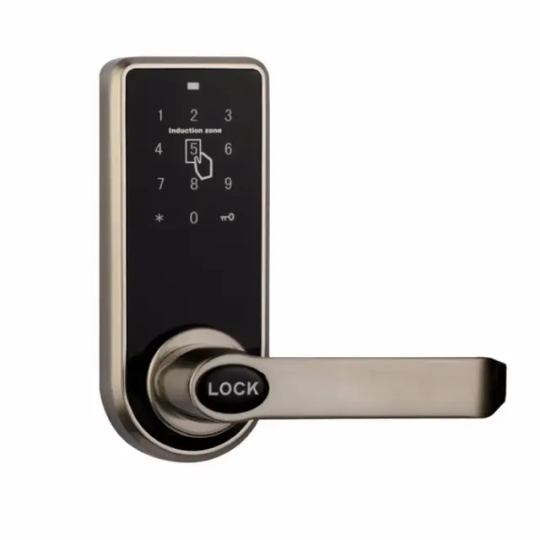
Demand for Enhanced Security Solutions
One of the most prominent drivers of the electronic locks market is the growing demand for high-level security solutions. With rising incidences of theft, burglary, and unauthorized access, consumers and businesses alike are opting for more reliable and intelligent locking systems. Unlike conventional locks, electronic locks offer layered security features including PIN codes, biometric scans, and time-based access, which reduce vulnerabilities and offer peace of mind.
Additionally, institutions such as banks, data centers, and healthcare facilities require rigorous security protocols. Electronic locks provide audit trails and real-time monitoring capabilities that help track entry logs, ensuring accountability and safeguarding sensitive environments. This demand for advanced, tamper-proof systems is continuously pushing the market toward technological evolution.
Growth in Smart Home and IoT Adoption
The increasing adoption of smart home technologies is another major market driver. As smart home ecosystems gain popularity, electronic locks are being seamlessly integrated with other smart devices like doorbell cameras, voice assistants, and central hubs. This connectivity allows users to control and monitor entry points remotely via smartphones or voice commands, adding significant convenience and security.
Furthermore, IoT-enabled locks provide real-time alerts, enabling homeowners and businesses to respond immediately to unauthorized access attempts. The growing trend of home automation and remote management is expected to remain a dominant force behind the proliferation of electronic locks.
Rising Urbanization and Infrastructure Development
Rapid urbanization, particularly in developing economies, is fostering the growth of modern housing and commercial infrastructure. Smart cities and digital buildings are increasingly incorporating electronic locks as part of their foundational security frameworks. New residential complexes, office buildings, hotels, and educational institutions are opting for electronic access control systems to streamline security operations.
Governments and private investors are channeling significant funds into real estate and infrastructure projects. With each new development, the need for scalable, high-tech locking mechanisms becomes more pronounced, further driving the electronic locks market.
Expanding Hospitality and Travel Industry
The hospitality industry is increasingly adopting electronic locks to enhance guest experiences and operational efficiency. Hotels and resorts prefer RFID-enabled or mobile app-based locking systems, which allow contactless check-ins and keyless entry. This not only improves convenience but also minimizes human error and enhances safety.
In the travel and tourism sector, vacation rentals and serviced apartments are leveraging electronic locks to provide secure, flexible access for guests. With short-term rentals becoming more popular, hosts prefer digital locks that can be programmed with temporary access codes and controlled remotely.
Rising Demand from Commercial and Industrial Sectors
Businesses are prioritizing secure access management, particularly for restricted or sensitive areas. Electronic locks provide them with the ability to control permissions based on employee roles, working hours, or location-specific requirements. Facilities such as warehouses, laboratories, and server rooms benefit immensely from electronic access control due to their heightened need for protection and tracking.
In industrial settings, electronic locks are being used to secure machinery, storage units, and hazardous zones. These sectors benefit from the robustness, auditability, and adaptability of electronic locking systems, making them vital tools in industrial safety protocols.
Technological Innovations and Product Diversification
Ongoing innovation in locking technology continues to boost the electronic locks market. Companies are investing in R&D to develop locks that are more user-friendly, secure, and adaptable to different settings. Hybrid models that support multiple authentication methods—such as biometric, PIN, and proximity cards—are gaining traction for their versatility.
Moreover, the miniaturization of components and improvements in battery life are enhancing the usability and longevity of electronic locks. Customization options for different environments and applications also appeal to a broader customer base, encouraging higher market penetration.
Conclusion
The electronic locks market is being driven by a powerful combination of safety needs, technological advancement, and consumer preferences for convenience. From securing private homes and businesses to supporting the digital transformation of cities, electronic locks are becoming an integral part of the modern security landscape. As demand continues to rise across various sectors, manufacturers are expected to focus more on innovation, affordability, and user-centric features to maintain momentum in this evolving market.
0 notes
Text
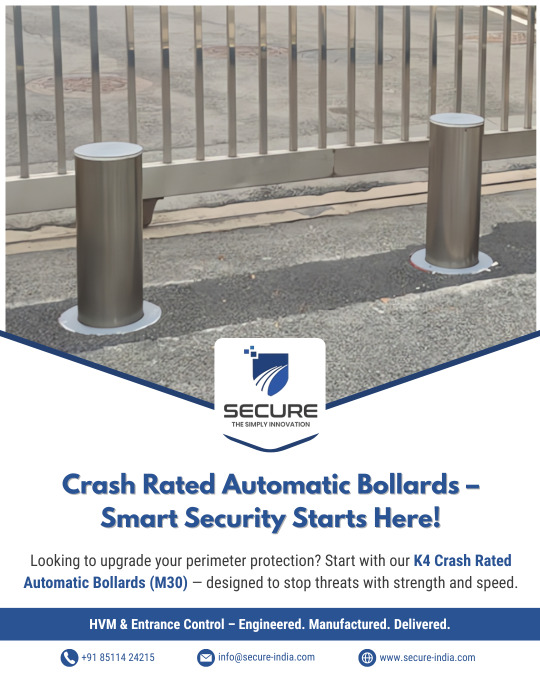
Crash Rated Automatic Bollards – Smart Security Starts Here!
Looking to upgrade your perimeter protection? Start with our "K4 Crash Rated Automatic Bollards (M30)" — designed to stop threats with strength and speed.
For higher security needs, explore our advanced models: K8 Bollards (M40) – Enhanced protection for critical sites K12 Bollards (M50) – Maximum impact resistance for the highest threat levels
✓ Engineered in India, trusted worldwide ✓ Ideal for embassies, defense zones, corporate HQs & more
Contact us today to choose the right level of protection! 📲 +91-85114-24215, +91-93132-23737 ✉️ [email protected] 🔗 www.secure-india.com
#SecureIndia#CrashRatedBollards#PerimeterSecurity#M30#K4Bollard#K8Bollard#K12Bollard#AccessControl#VehicleSecurity#HighSecuritySolutions
0 notes
Text

Introducing Bio-Lynx by Star Link – A smarter way to manage your workforce!
✅ Fingerprint Recognition ✅ Smart Card Enabled ✅ Wi-Fi / GPRS Ready ✅ Access Control Compatible
Perfect for enterprises and institutions aiming for secure and seamless attendance systems. 🔗 Check out more at: www.starlinkindia.com 📞 Contact us for a live demo!
0 notes
Text

🔐 Fabric Access Tip
💭 Q: What is the purpose of workspace roles in Microsoft Fabric?
✅ A: Workspace roles are used to control access and manage the lifecycle of data and services in Fabric.
Each role (Admin, Member, Contributor, Viewer) comes with its own permissions—knowing the difference can save your project!
🧩 Are you assigning workspace roles strategically in your Fabric environment?
💬 Share how you're using roles to keep your data ecosystem secure and collaborative.
#MicrosoftFabric#FabricWorkspace#DataGovernance#AccessControl#PowerBI#DataPlatform#FabricAdmin#MicrosoftFabricTips#SecureData#DataCollaboration#OneLake#DeltaLake#Dataverse#Lakehouse
0 notes
Text
Strengthen your organization's security with robust Identity Management. Ensure proper access controls, reduce risks, and enhance compliance.
0 notes
Text
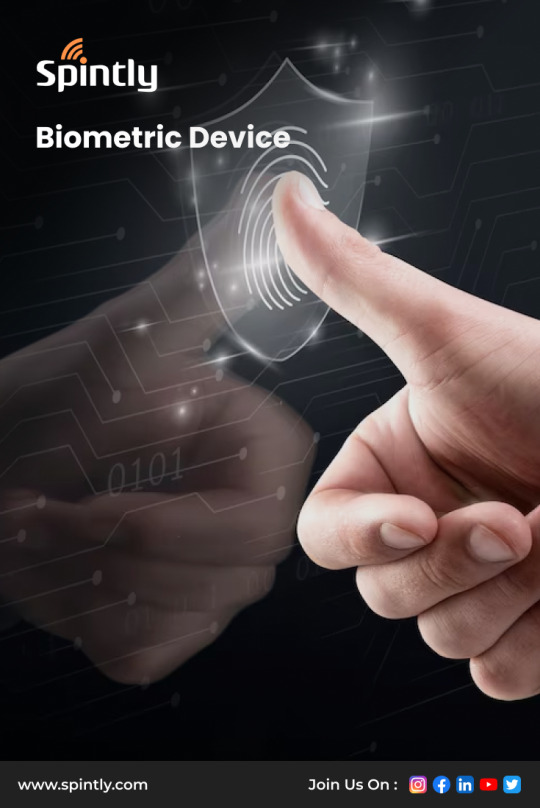
One touch, endless possibilities. Explore Spintly’s Bluetooth biometric solutions - secure access from your phone to the front door: https://spintly.com/blog/biometrics-the-future-and-recent-trends-in-access-control/
#biometric machine#biometric attendance#biometric access#biometrics#mobile access#spintly#accesscontrol#visitor management system#access control solutions#smartbuilding#smartacess
0 notes
Text

🚘 Still wasting time Searching for parking? Make way for Smart Parking with Neptune’s Parking Guidance System! Whether it's a mall, office, airport, or residential complex, our system ensures optimized space usage and a seamless parking experience. Looking to transform your facility into a smarter space?
Connect with us today! 📞 +91 8010 807 000 🔗 www.neptuneautomatic.com/products/pedestrian-gates/ 📩 [email protected] . . .
Transform your Parking Space to into a smarter Parking Space
#parking solutions#security and access#parking guidance#parking management solutions#accesscontrol#parking made easy#parking garage#effortless parking#parking#parking lot
0 notes
Text
#SmartSecurity#AccessControl#Innovation#TechnologySolutions#powerelectronics#powermanagement#powersemiconductor#Hikvision India
0 notes
Text
Electronic Cylinder Lock Credentials Market Future Trends Driving Security Innovation and Smart Access Control
The electronic cylinder lock credentials market is undergoing a transformative phase as advancements in digital security and growing demand for smarter access control systems are shaping its future trajectory. With rapid urbanization, increased focus on building automation, and heightened security concerns, the industry is witnessing a significant shift towards innovative locking systems that are more reliable, efficient, and integrated with broader smart technologies.

Rising Adoption of Smart Access Systems
One of the most prominent trends in the electronic cylinder lock credentials market is the increasing integration of smart access systems in residential, commercial, and industrial properties. Traditional key-based entry systems are being replaced by advanced credential technologies such as RFID cards, Bluetooth-enabled locks, biometric solutions, and mobile-based access. These technologies offer enhanced user convenience, real-time monitoring, and a significant boost in security. Consumers are increasingly favoring credential systems that enable remote locking/unlocking, user tracking, and activity logs.
As the number of smart homes and intelligent commercial facilities continues to grow globally, the demand for electronic cylinder locks with programmable credentials is also expected to rise. The seamless connectivity with home automation platforms and security systems makes these locks a key component in future-proofing infrastructure.
Data Security and Privacy at the Forefront
In the era of connected devices and the Internet of Things (IoT), data privacy and cybersecurity are top priorities. The electronic cylinder lock credentials market is responding to this demand by embedding advanced encryption technologies and secure communication protocols within its systems. Vendors are investing heavily in R&D to develop products that can resist hacking attempts and ensure the protection of personal and corporate data.
Future trends are pointing towards systems that utilize blockchain and decentralized security protocols to further minimize vulnerabilities. This will not only secure access points but also enhance user confidence in adopting these systems at scale.
Sustainability and Eco-Friendly Designs
Sustainability is emerging as a critical factor in the design and deployment of electronic lock systems. Manufacturers are exploring energy-efficient credential systems that require less power and use recyclable materials. Battery-operated locks with extended life spans and solar-powered alternatives are becoming increasingly popular, especially in off-grid locations or where energy conservation is a priority.
The shift toward greener technologies is also driven by regulatory frameworks and green building certifications that promote environmentally responsible construction and infrastructure. In response, the electronic cylinder lock industry is aligning its innovations with sustainable practices.
Customization and Scalability
Future market trends also highlight the growing need for customized and scalable solutions. With the diversity of end users ranging from homeowners and property managers to corporate offices and government facilities, manufacturers are focusing on modular lock systems that can be adapted based on specific requirements.
Credential types can be programmed and adjusted remotely, and access can be granted or revoked instantly. This level of control is particularly valuable for organizations managing multiple entry points or properties, providing a scalable security solution without compromising efficiency.
Rise of Mobile Credentials and App-Based Access
The proliferation of smartphones is significantly impacting the future of electronic cylinder lock credentials. App-based access and mobile credentials are gaining ground as a preferred method of entry, especially among younger, tech-savvy users. These systems eliminate the need for physical keys or cards, offering a more convenient and contactless user experience.
As mobile apps increasingly serve as the central hub for managing smart devices, electronic locks with mobile credentials are becoming an integral part of smart ecosystems. These locks can be managed remotely, with users receiving real-time updates on lock activity, notifications, and temporary access sharing.
Growing Adoption in Emerging Economies
The demand for advanced security systems is not limited to developed regions. Emerging economies in Asia-Pacific, Latin America, and the Middle East are also witnessing increased investment in smart infrastructure and security modernization. This provides lucrative opportunities for manufacturers of electronic cylinder lock credentials, especially those offering cost-effective and scalable solutions.
Governments and businesses in these regions are implementing digital security protocols across public and private sectors, which include modernizing physical security systems. As these economies continue to digitize, the demand for secure, reliable, and flexible electronic locking solutions is expected to soar.
Conclusion
The future of the electronic cylinder lock credentials market is being shaped by a confluence of technological, environmental, and societal trends. As demand for smarter, more secure, and sustainable access solutions continues to grow, the industry is poised for sustained innovation and expansion. From mobile credentials to biometric access and from enhanced data security to energy-efficient designs, the future of lock credentials is unlocking a smarter and more secure world for everyone.
0 notes
Text

Maximum Protection, Certified to Stop Any Threat!
Introducing our K4, K8, and K12 Certified Road Blockers – engineered to meet international crash-rating standards for hostile vehicle mitigation.
��� K4 Certified – Stops light vehicles ✓ K8 Certified – Stops medium threats ✓ K12 Certified – Stops heavy-duty vehicles at high speed
Tested. Certified. Trusted.
Perfect for embassies, airports, data centers, military zones, and high-security facilities.
Contact us today! 📲 +91-85114-24215, +91-93132-23737 ✉️ [email protected] 🔗 www.secure-india.com
0 notes